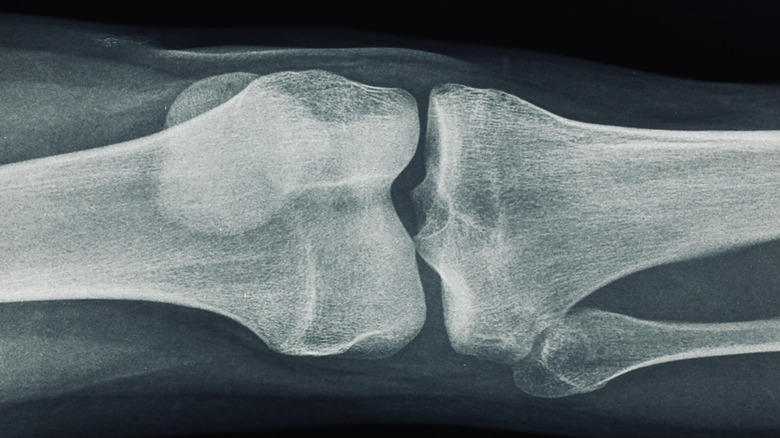What Happens To Your Body When You Hit Your Funny Bone?
Everybody knows that hitting your funny bone isn't funny, but did you know it's not a bone either? It's actually a long nerve that runs all the way from your neck down to your fingers, called the ulnar nerve. The ulnar nerve is a motor type of nerve, responsible for controlling the movements of your pinky and ring fingers. There are other animals with funny bones as well because many limbs are homologous features.
The term "funny bone" is, fittingly, a pun. It comes from the fact that, where the ulnar nerve runs through your elbow, it passes by a bone called the humerus, the name of which is a homophone for humorous. The humerus is your upper arm bone, and it's the longest bone in the human body after the leg bones. At the point where the humerus ends in your elbow, there is a bulbous outcrop to the side called the medial epicondyle. It is prominent enough that you can feel it by touching your inner elbow.
When you bump the inside of your elbow against something, the ulnar nerve gets slammed into the medial epicondyle of the humerus, causing a sharp pain to shoot up your arm and down to your hands. It hurts like all get out, but it's generally not an injury to worry about. In most cases, the pain subsides within seconds, but there are cases in which ulnar nerve damage can be much more severe.
When pain in the funny bone become serious
Usually, striking your funny bone against something won't do long term damage, but other types of injuries to the ulnar nerve can have serious consequences. Slow and sustained pressure on the nerve is often more dangerous than bumping it. If you habitually lean on your elbow or your palm, or if you often keep your elbow bent, you can suffer ulnar neuropathy, also known as cubital tunnel syndrome, where the nerve is constantly compressed. This can affect the conductivity of your nerve cells, slowing down signals from your brain to your hands. Over time, it can destroy nerve fibers, causing numbness. Cubital tunnel syndrome is one of the most common nerve conditions. Risk factors for cubital tunnel syndrome include bone fractures, dislocations, and arthritis.
There is a second, rarer form of ulnar nerve entrapment called Guyon's canal syndrome. It occurs where the ulnar nerve passes through the wrists into the hands. It is often caused by long-term sustained pressure on the nerve at the point of the wrist, but can also be caused by cysts, tumors, and wrist injuries. Serious cases of ulnar nerve entrapment, such as Guyon's canal syndrome or cubital tunnel syndrome may require surgery, which involves repositioning the nerve and padding it. Even in these severe cases, recovery is generally quick, with some patients experiencing immediate relief.

